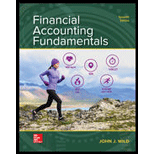
Inventory:
Inventory refers to the stock or goods which will be sold in the near future and thus is an asset for the company. It comprises of the raw materials which are yet to be processed, the stock which is still going through the process of production and it also includes completed products that are ready for sale. Thus inventory is the biggest and the important source of income and profit for the business.
Cost of Goods Sold (COGS) or Cost of Sales:
Cost of goods sold is the total expenses or the cost incurred by the business during the process of manufacturing of goods and is directly related to the production. It generally includes the cost of raw material, labor and other
Inventory Turnover Ratio:
It depicts the fraction of inventory sold or used by the company within a fiscal year. It states a ratio which shows the number of times goods were sold during an accounting period which thereby states the productivity or the efficiency level of the company regarding the inventory which apparently is the biggest asset for the company.
Days’ Sales in Inventory: It indicates the days taken up by the company to convert the stock items into actual sales.
1.
To compute: Inventory turnover.
2.
To compute: Day’s sales in inventory.
Want to see the full answer?
Check out a sample textbook solution
Chapter 5 Solutions
FINANCIAL ACCT.FUND.(LOOSELEAF)
- Daley Industries wishes to develop a single predetermined overhead rate. The company's expected annual fixed overhead is $420,000, and its variable overhead cost per machine hour is $3.25. The company's relevant range is from 200,000 to 650,000 machine hours. Daley expects to operate at 520,000 machine hours for the coming year. The plant's theoretical capacity is 850,000 machine hours. The predetermined overhead rate per machine hour should be: a. $3.85 b. $4.06 c. $3.75 d. $4.25arrow_forwardNeed accounting questionarrow_forwardWhat is the total manufacturing costs charged to work in process during Novemberarrow_forward
- Which accounting concept supports recording bad debt expense before accounts are actually uncollectible? a) Full disclosure principle b) Matching principle c) Going concern concept d) Materiality concept need answerarrow_forwardCan you explain the correct approach to solve this financial accounting question?arrow_forwardsubject=general accountingarrow_forward
- Rose Equipment Corporation (LEC) paid $6,800 for direct materials and $11,500 for production workers' wages. Lease payments and utilities on the production facilities amounted to $7,400, while general, selling, and administrative expenses totaled $4,200. The company produced 7,500 units and sold 5,900 units at a price of $7.75 per unit. What was LEC's net income for the first year in operation? Need answerarrow_forwardSolve with explanation and accountingarrow_forward6 PTSarrow_forward
 Financial AccountingAccountingISBN:9781337272124Author:Carl Warren, James M. Reeve, Jonathan DuchacPublisher:Cengage Learning
Financial AccountingAccountingISBN:9781337272124Author:Carl Warren, James M. Reeve, Jonathan DuchacPublisher:Cengage Learning Managerial Accounting: The Cornerstone of Busines...AccountingISBN:9781337115773Author:Maryanne M. Mowen, Don R. Hansen, Dan L. HeitgerPublisher:Cengage Learning
Managerial Accounting: The Cornerstone of Busines...AccountingISBN:9781337115773Author:Maryanne M. Mowen, Don R. Hansen, Dan L. HeitgerPublisher:Cengage Learning Managerial AccountingAccountingISBN:9781337912020Author:Carl Warren, Ph.d. Cma William B. TaylerPublisher:South-Western College Pub
Managerial AccountingAccountingISBN:9781337912020Author:Carl Warren, Ph.d. Cma William B. TaylerPublisher:South-Western College Pub Cornerstones of Financial AccountingAccountingISBN:9781337690881Author:Jay Rich, Jeff JonesPublisher:Cengage LearningPrinciples of Accounting Volume 1AccountingISBN:9781947172685Author:OpenStaxPublisher:OpenStax College
Cornerstones of Financial AccountingAccountingISBN:9781337690881Author:Jay Rich, Jeff JonesPublisher:Cengage LearningPrinciples of Accounting Volume 1AccountingISBN:9781947172685Author:OpenStaxPublisher:OpenStax College Financial Reporting, Financial Statement Analysis...FinanceISBN:9781285190907Author:James M. Wahlen, Stephen P. Baginski, Mark BradshawPublisher:Cengage Learning
Financial Reporting, Financial Statement Analysis...FinanceISBN:9781285190907Author:James M. Wahlen, Stephen P. Baginski, Mark BradshawPublisher:Cengage Learning





